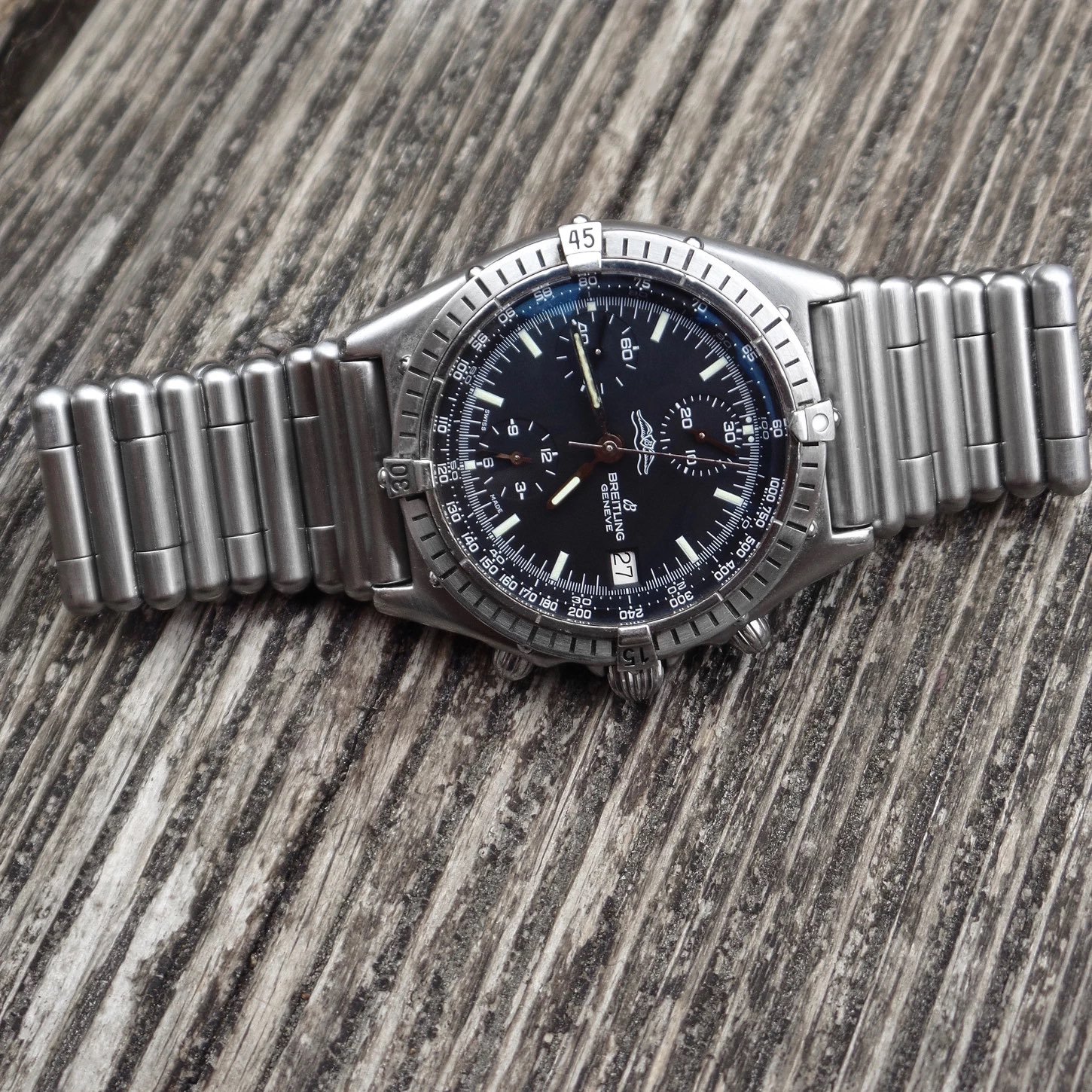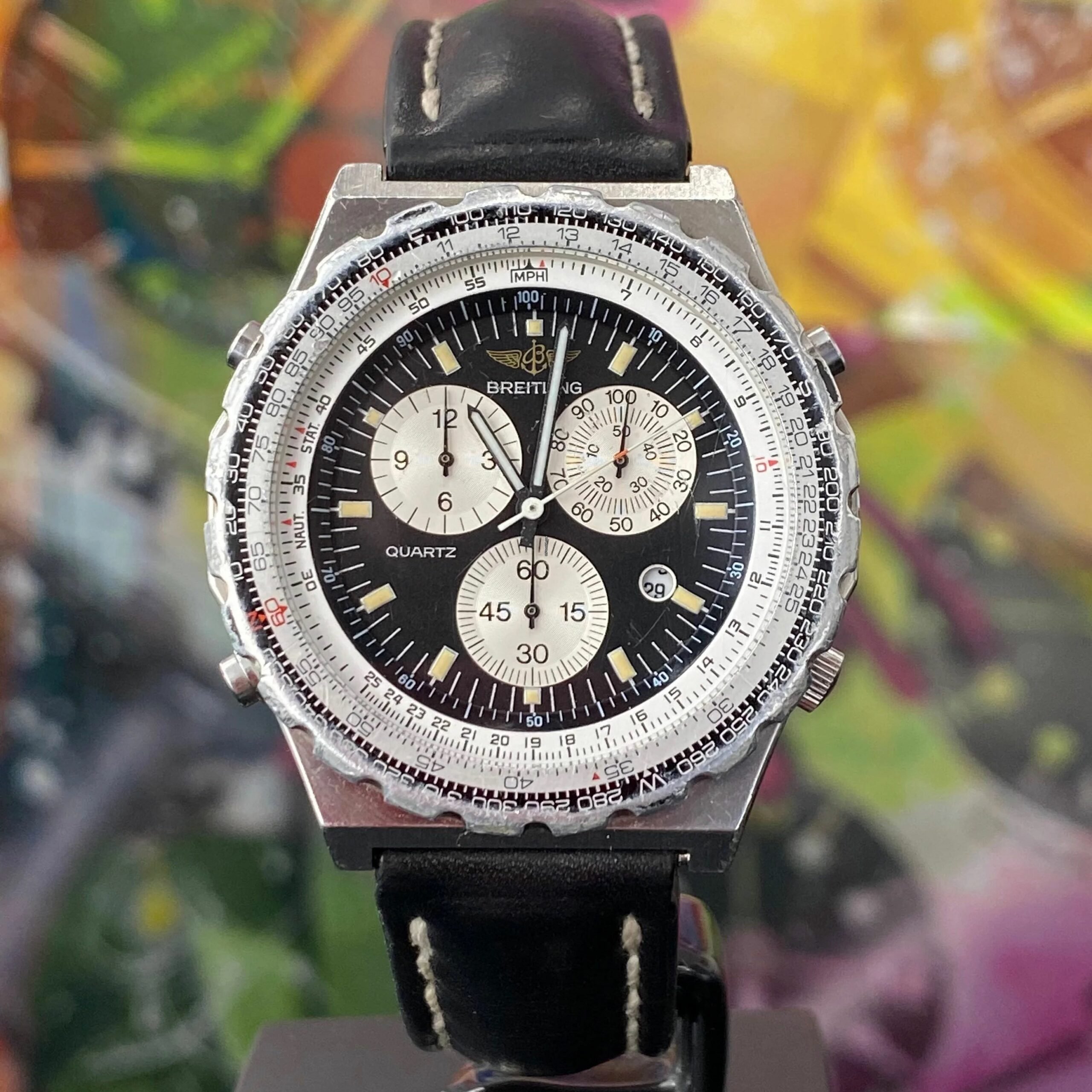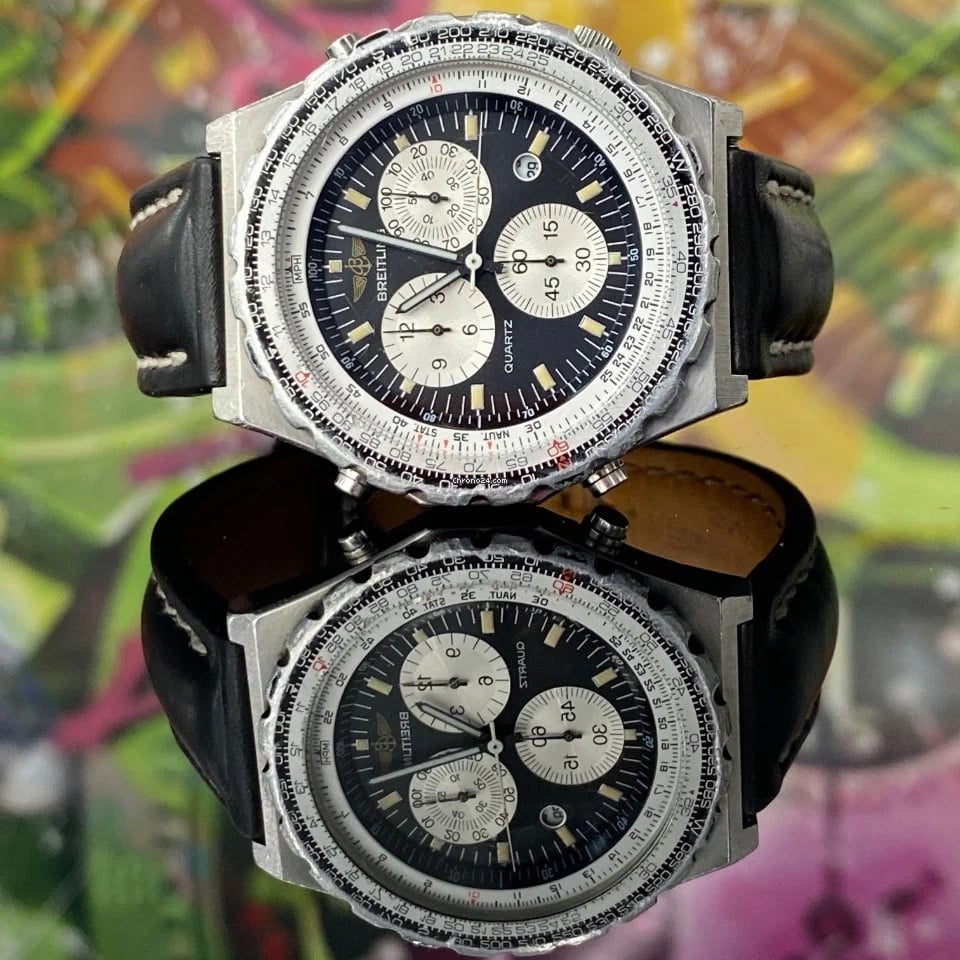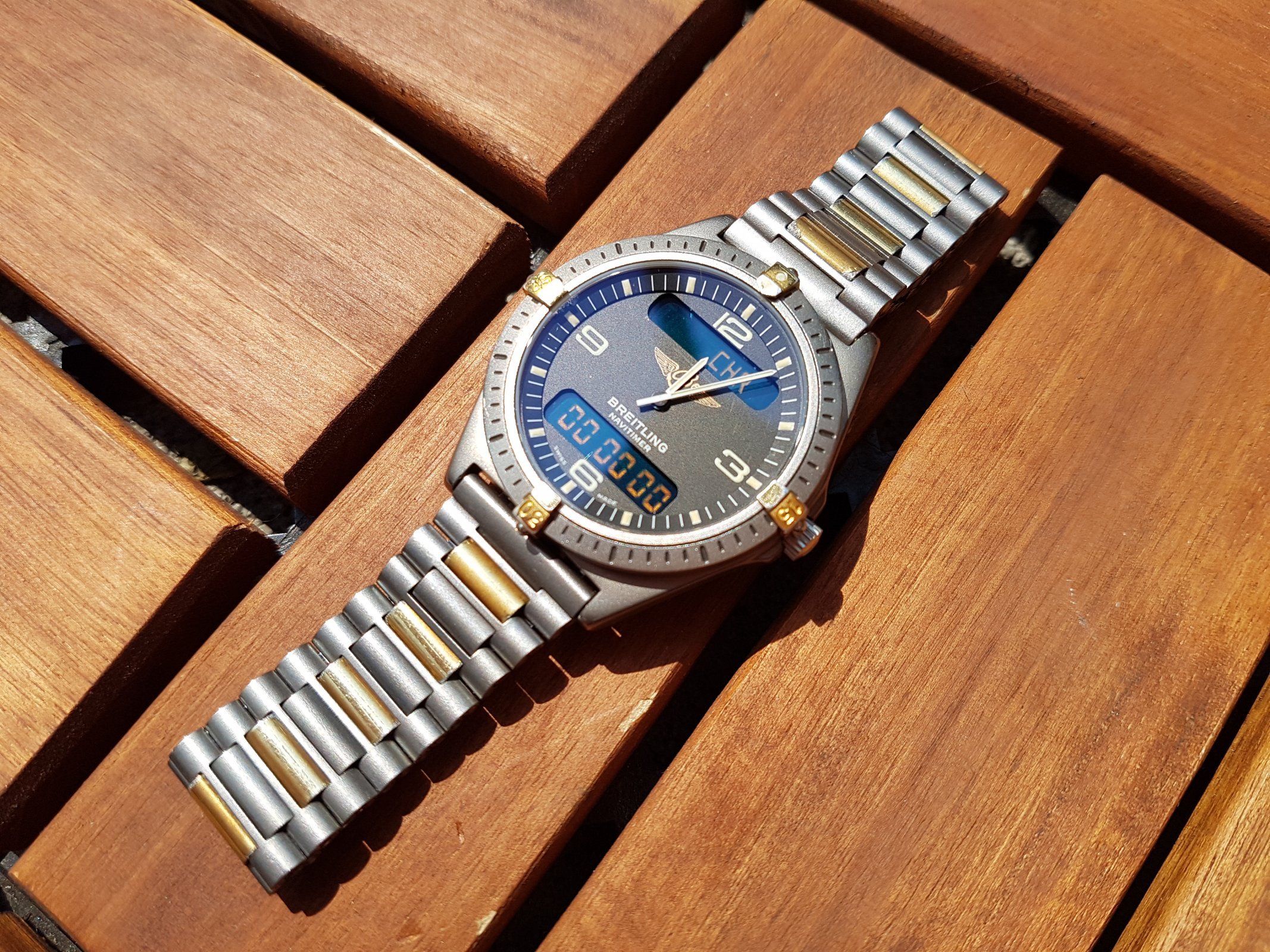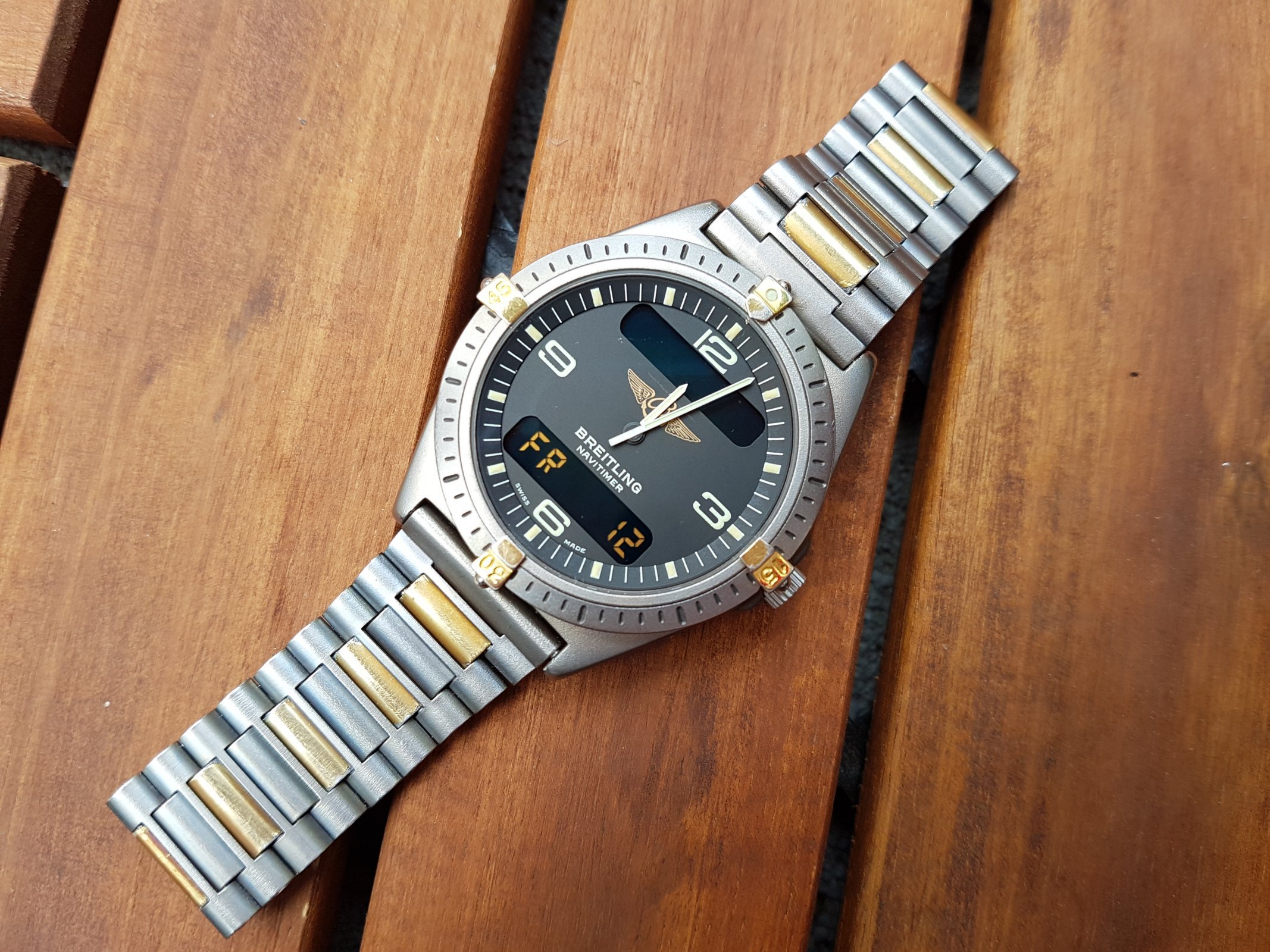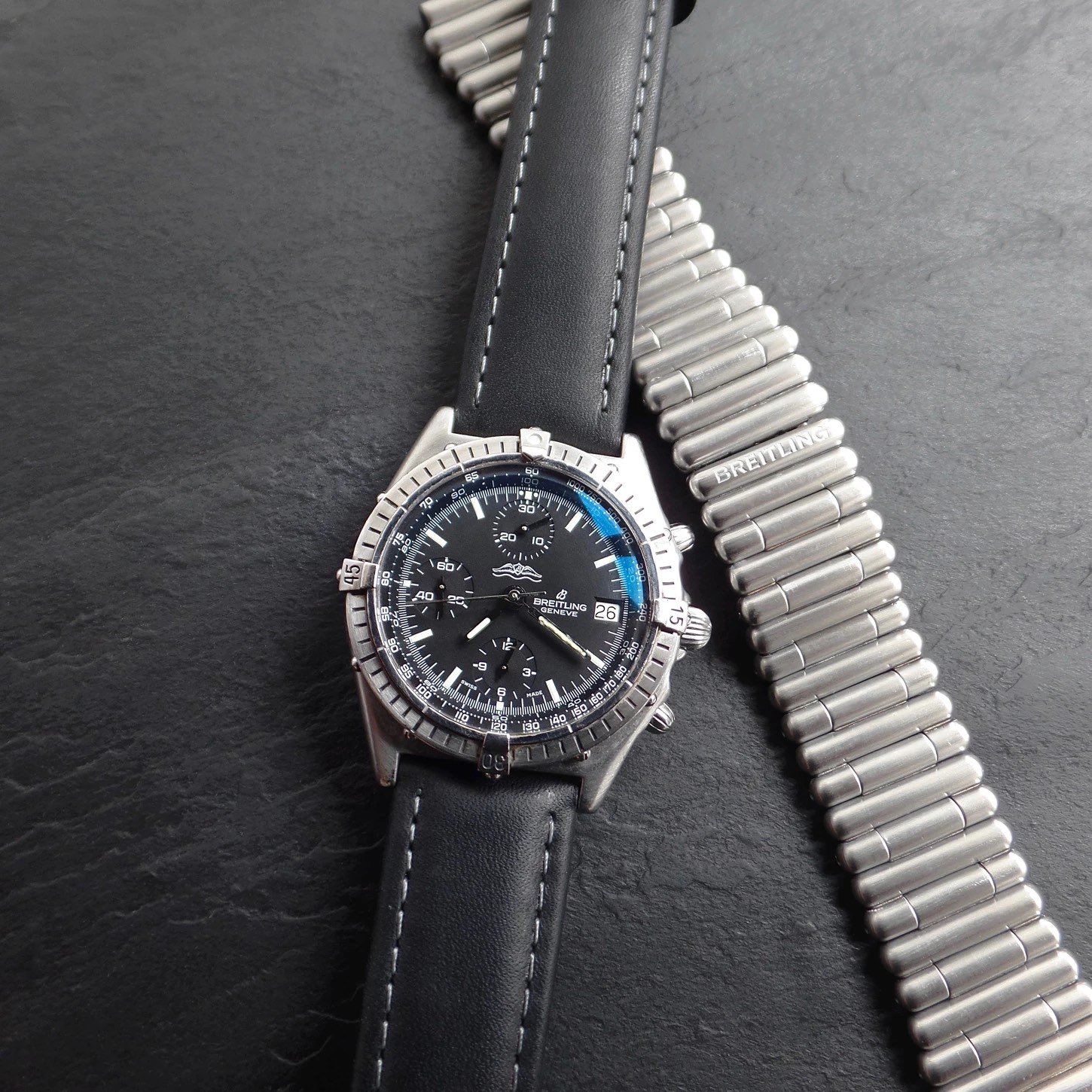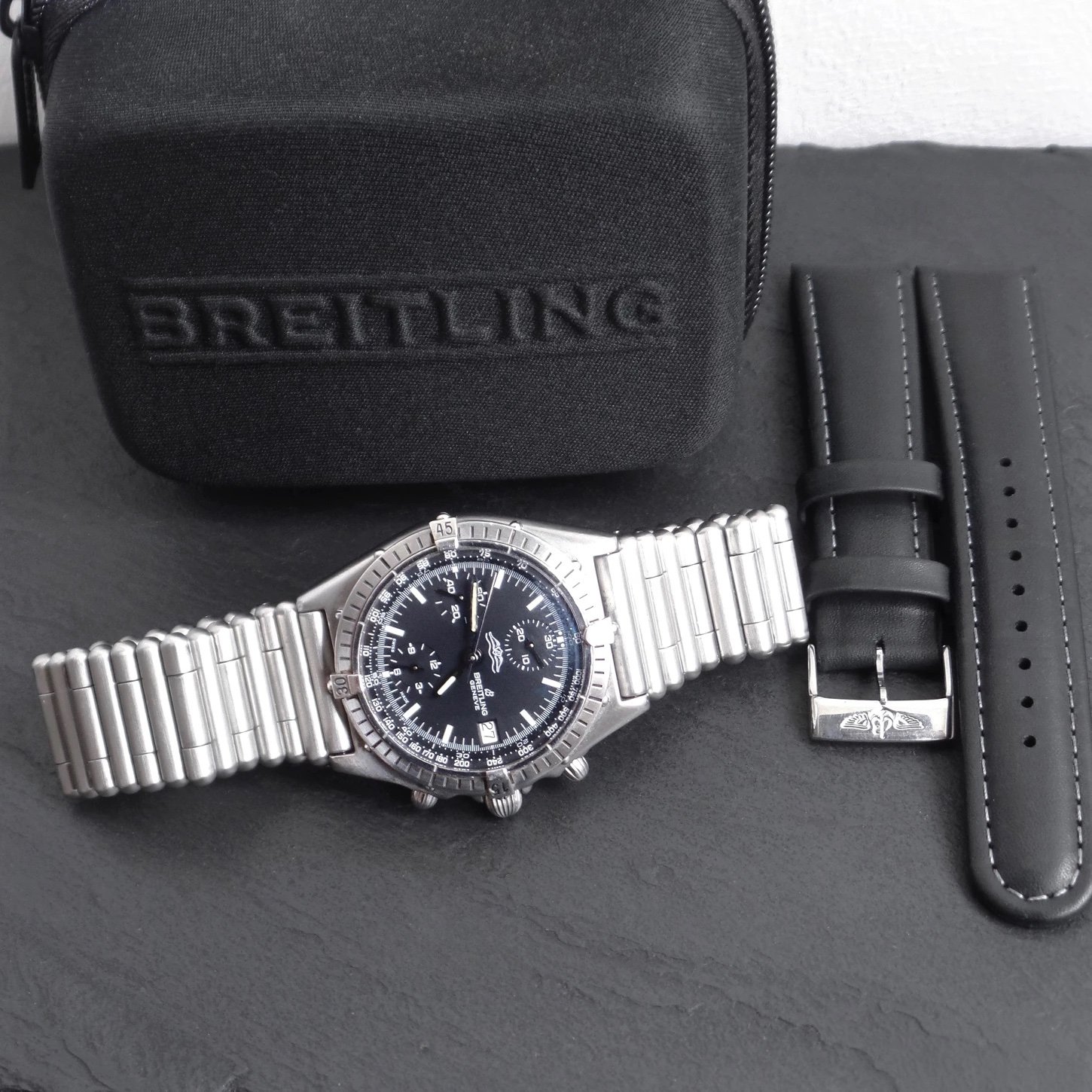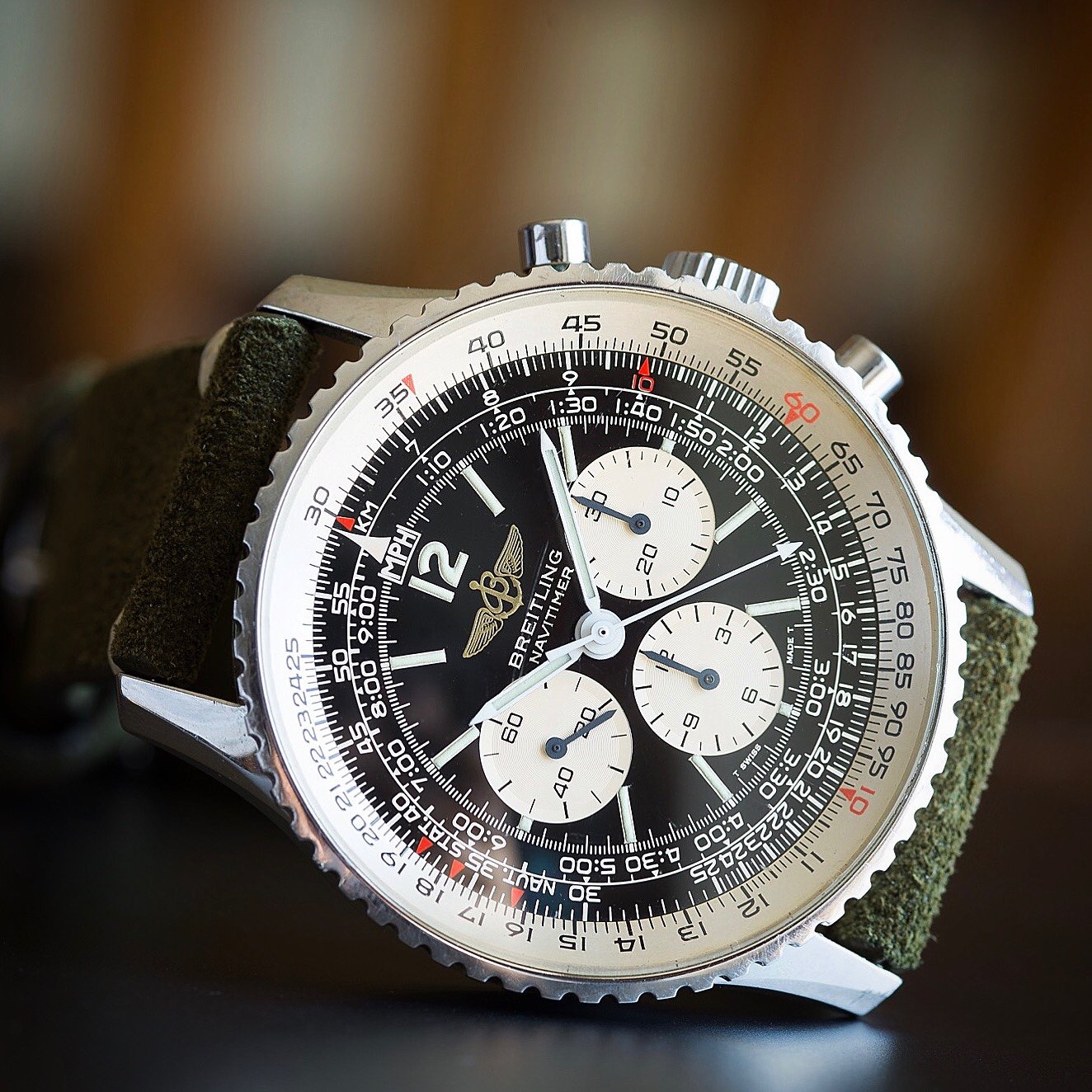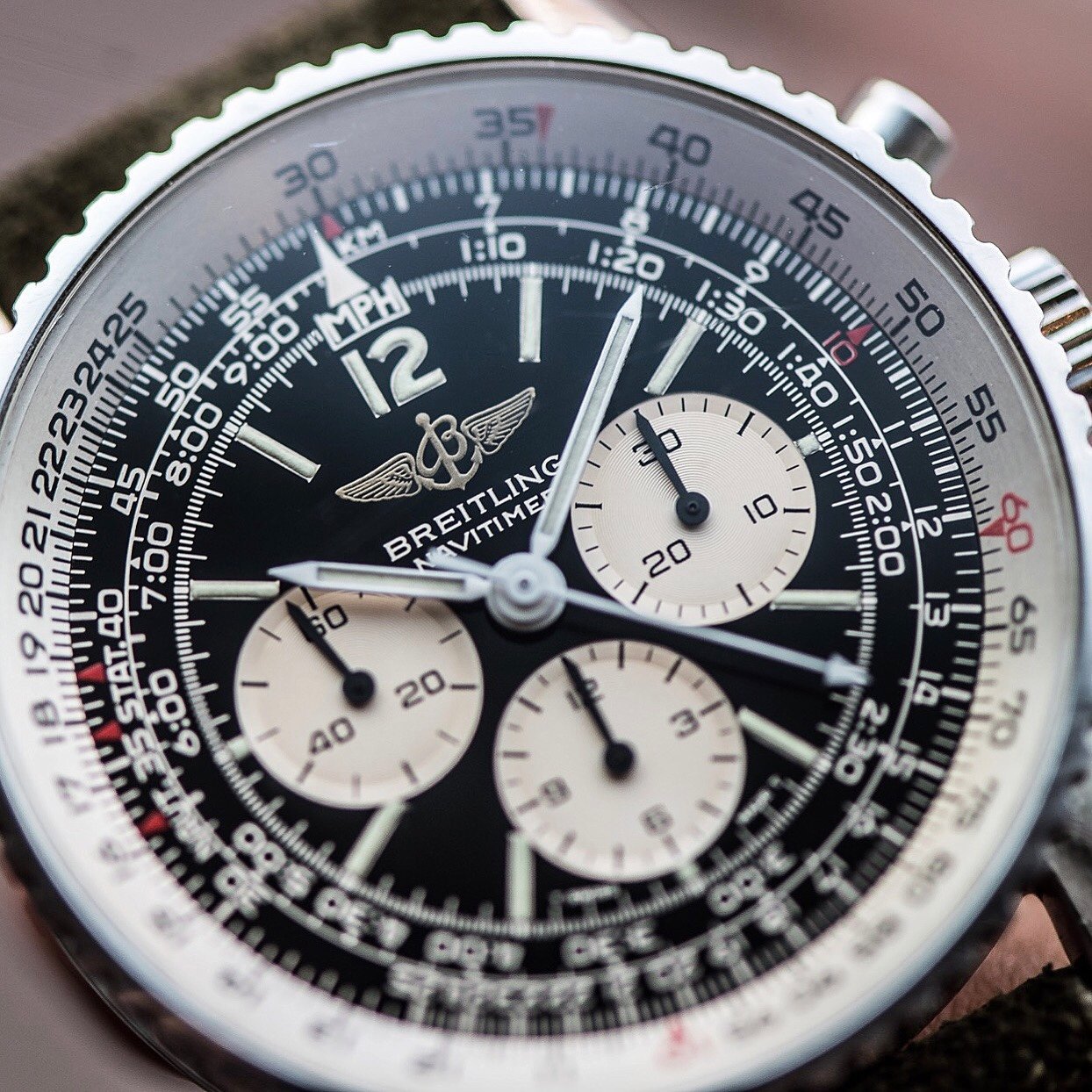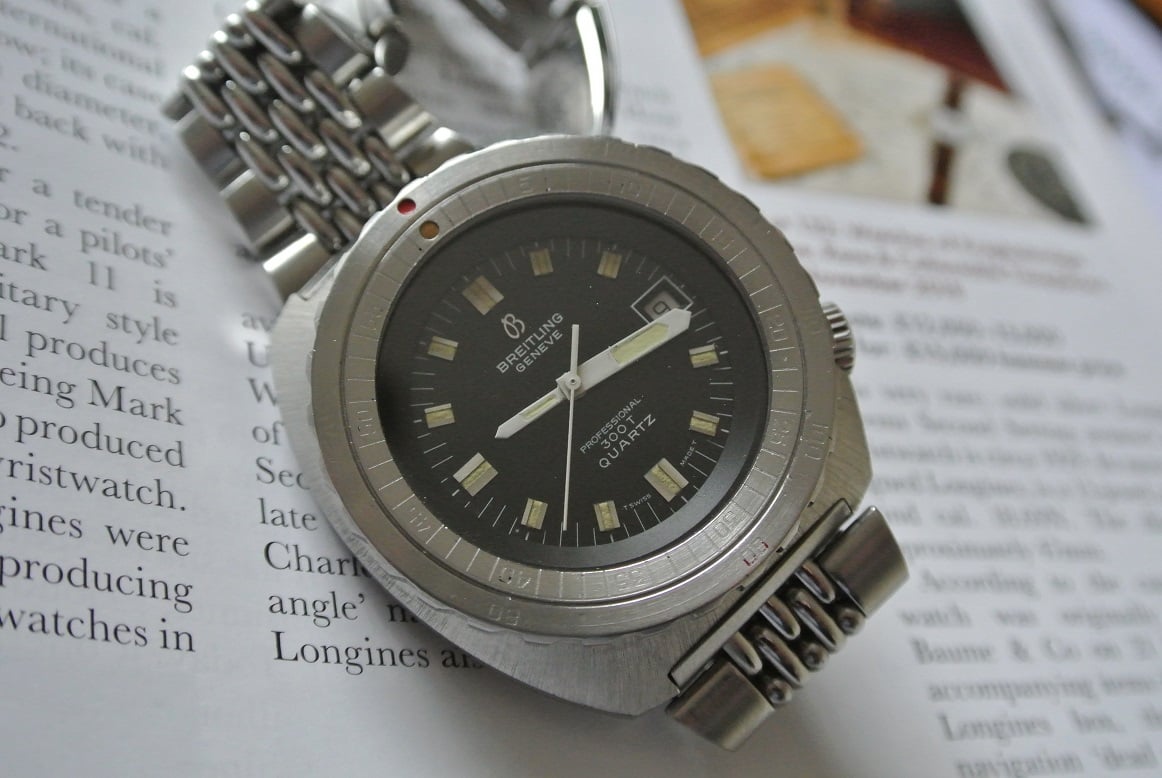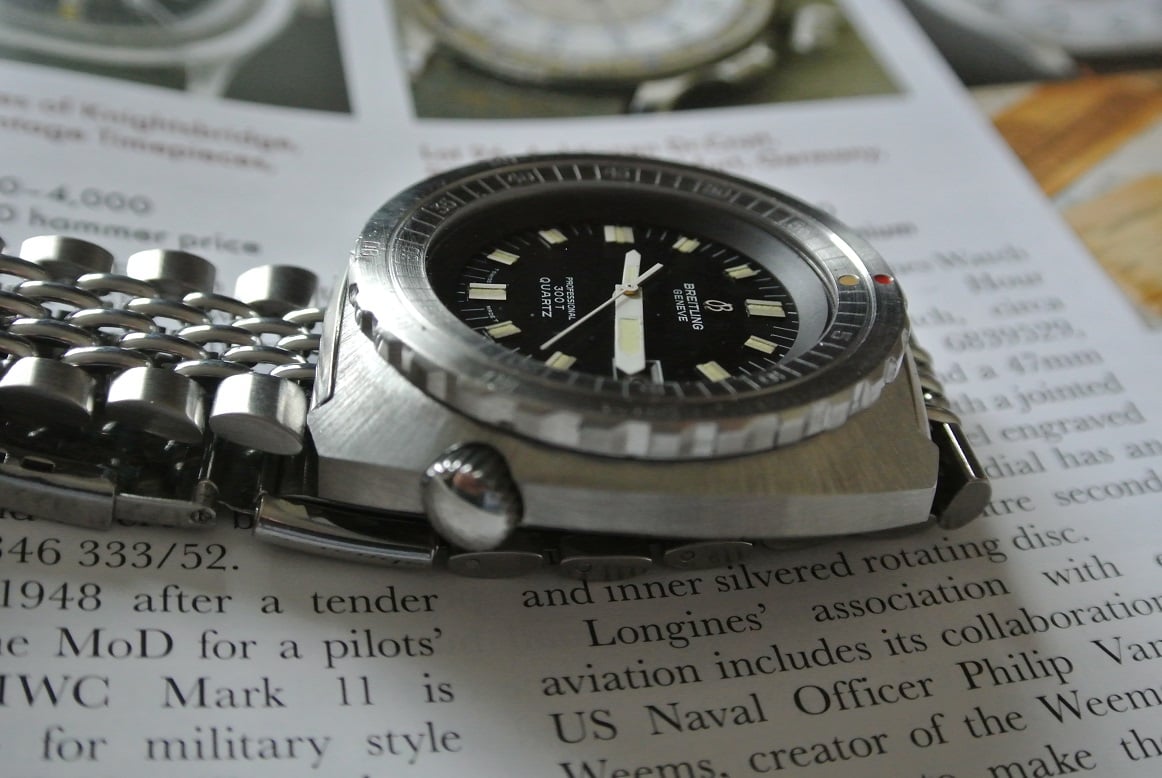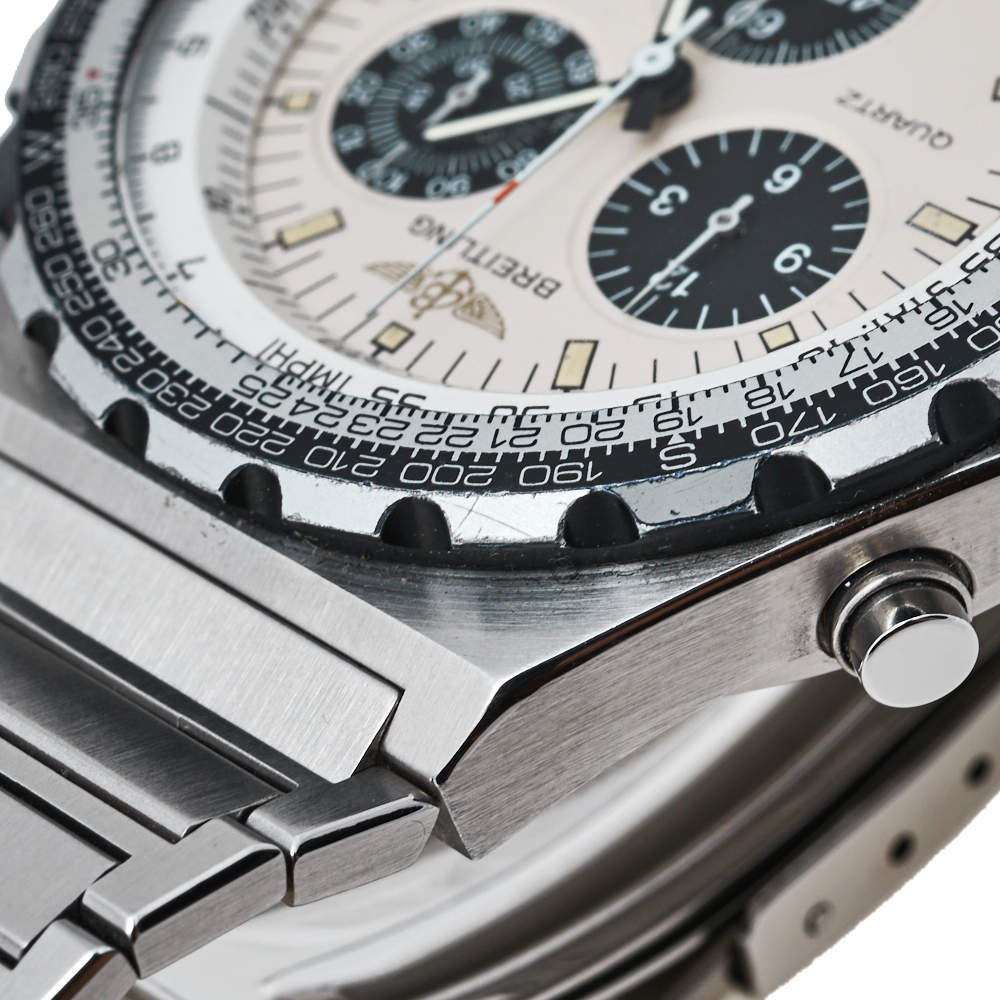Buying Guide: The Best Breitling Watches From The 1980s
We like to talk about vintage watches a lot within the Fratello team. Though most of what we write about is largely focused on the most recent releases and developments, for many of us a lot of the fun can be found in the sometimes weird and often wonderful world of vintage watches. It’s a world full of history, remarkable watches, incredible stories, and quirky details. It inspired us to come up with a series of articles focusing on the best watches per decade from a select group of brands. Some of them are priceless, some of them still affordable. In this installment, we will take a look at the best Breitling watches from the 1980s.
While the 1970s were a decade filled with tremendous change in the watch industry, the 1980s showed the fruits of that change. When Seiko started the quartz revolution, most Swiss brands never predicted the enormous long-term effects it would have on the industry. This is also why a lot of Swiss brands ended up in trouble, often with disastrous results. In the 1980s, quartz was king, and you will see that reflected in some of this week’s picks.
When it comes to style and design, the eighties were a special time. Often perceived as a decade with a distinct lack of style, or rather an abundance of tacky style and designs, the 80s were often frowned upon. But, over time, and with the benefit of hindsight, we have seen an increasing appreciation for some of the more unique watches from this era. So as you might imagine, there are plenty of good things to discover if you are looking for a vintage piece from the 1980s.
Breitling in the 1980s
The 1980s were a strange time for Breitling. During the 1970s, the brand was heavily affected by the quartz crisis, with the legendary Willy Breitling at the helm. In 1978 all production was ceased at Breitling. A year later, Willy Breitling decided to sell the company to Ernest Schneider due to health issues. Because Willy Breitling’s sons Gregory and Alain were still young and the industry’s future was uncertain, selling the company was the most logical step. Schneider was a former Swiss soldier and, at the time, at the head of a small watch manufacturer (Sicura). Schneider relocated the Breitling head office to Grenchen and started his plan to revive the brand. Willy Breitling passed away five weeks after he sold the company to Schneider.
While Schneider started developing new models immediately, he focused on quartz watches first. He then went on to introduce the Chronomat as the first of the new mechanical Breitling models that would define the company’s future. Schneider focused heavily on the aviation history of Breitling, as he was a pilot himself. Additionally, Schneider was responsible for creating a completely new design language for the brand. It was a huge step away from the previous era, and it proved to be the start of Breitling’s new identity. It was a new beginning that came with a lot of challenges in both design and production. But fortunately, the name Breitling never ceased to exist. This is why we can now have a look at five of the best Breitling watches from the 1980s.
The entry-point — Breitling Jupiter Pilot ref. 80975
The Jupiter line was released in 1980, just one year after Schneider had taken over the company. As it was the height of the quartz era, Schneider initially focused almost exclusively on quartz watches. But what Breitling first came up with, was far from its most popular line of watches. The early days of the Schneider-era are not considered to be the best days for the brand. The focus on quartz was obviously a step away from Willy Breitling’s proud legacy. Schneider resorted to Japanese quartz movements rather than producing his own. These movements weren’t always of the finest quality, leading to a lot of repairs and replacements over time. And the new product lines showed a rather strange integration of classic Breitling designs and typical quartz features. One of the best examples of that weird combination was the Breitling Jupiter line.
The first Navitimer Jupiter models (ref. 80390 and ref. 80970) integrated a liquid-crystal display (LCD) on the dial. As all pilot’s watches, they were part of the Navitimer collection, and the well-known name was also featured on the dial. The dial design became a weird mix of old and new that looked a bit odd. In 1986, the brand released the New Jupiter ref. 80971, which took design queues from the Breitling Eric Tabarly line. The results were dreadful. Along with its successor, the ref. 80972 these are watches best forgotten. This is why I picked the Breitling Jupiler Pilot ref. 80975, released in 1988. It was the follow-up to the ref. 80972 and no longer used the dual-display layout. It also added the word “pilot” to the name. The watch came with an interesting combination of an angular case shape with the iconic Navitimer looks.
A brilliant bracelet
The watch came with a 42mm angular case that was also used for its predecessor. But the combination of this case shape and the “normal” dial design works a lot better than the previous designs. The first dial configuration was black with a silver subdial, but a silver dial with black subdials followed a year after its introduction. I prefer the latter because it takes a step away from the more classic look. The Jupiter Pilot was equipped with a bi-directional bezel, and the dial featured three sub-dials and the date in a round window at 4 o’clock. The date window is a nice little detail that adds character. Just like the Jupiter bracelet that the watch came on. The design of that integrated bracelet was also used for the previous generation but with the ref. 80975 it really combined well with the newer model’s overall design.
Inside the case, Breitling used the quartz caliber B233, which was essentially a Miyota 3S10/3510 movement. This movement was used by a string of brands in the 1980s and 1990s. It displays hours, minutes, chronograph seconds, 1/10th of a second, 60 minutes, 12 hours, the date, and even comes with an alarm function. The alarm is often a topic of discussion because when changing the battery, the coil spring would often fly out. As a result, after a battery change, the alarm would not work anymore. It’s something to keep in mind when you are in the market for a Jupiter Pilot. Finding a Jupiler Pilot ref. 80975 is definitely possible but always make sure all the functions work and that the movement is in decent shape. Depending on the condition of the watch, you will pay roughly between 1K – 2K for one.
My pick —Breitling Aerospace ref. 80360
It’s no secret that we are big fans of the Breitling Aerospace here at Fratello. In fact, quite a few of the guys on the team have an Aerospace in their collection. It’s one of those iconic, quirky designs, like the Speedmaster X-33, that has a loyal following. From having seen and worn an Aerospace, I can tell that I would eventually like to add one to my collection. The first generation Aerospace ref. 80360 was introduced in 1985 as Breitling’s latest aviator watch. The watch is characterized by its analog/digital layout that has since become iconic in the watch industry. Additionally, the watch was also one of the first to feature the rider tabs that Breitling watches became famous for in the 1980s.
The two first generations of the watch were actually called the Breitling Navitimer Aerospace. The brand used the Navitimer name for all its aviation watches from the 1980s to the early 1990s. You can find the Navitimer name on the dial and on the case back, making it easy to recognize the older Aerospace models. Speaking of the case, the watch features a 40mm case that is only 9mm high and which came in two basic configurations. The first was an all-titanium case, and the second was a two-tone case made from titanium with gold-colored rider tabs. The bracelet matched the choice of the case with a full-titanium and a titanium and gold bi-color option. On top of that, you had the choice between a titanium-grey or ivory dial.
A truly versatile watch
Inside the titanium case, Breitling equipped the Aerospace with the seven-jewel quartz ETA caliber 988. This quartz movement featured an analog display for the time in hours and minutes and a digital display for the time, date, second time-zone, chronograph, countdown timer, and alarm functions. All of its features are activated by turning the crown and can be operated by simply turning, pushing, or pulling out the crown. It means the watch has no separate pushers, which keeps the case design extremely clean, especially for a watch with so many different functions. Unusual for LCDs at the time was the inverted mode that shows the text and numbers in gold on a dark background. The first generation Aerospace stayed in production for roughly five years, after which it was replaced by a newly upgraded Aerospace. What remained unchanged, however, were the characteristic Aerospace looks.
It’s those looks that have made the Aerospace one of the brand’s biggest icons over the past 35 years. The Aerospace is an acquired taste, but people that have one praise the watch for its light weight, slim profile, the intuitiveness of the crown-operated functions, and the unmistakable Breitling charm. The watch is stunning on the bracelet, but it also looks great on a NATO strap. I think it really might be the best Breitling of that era, and finding them is not too difficult. Just make sure that all the functions work before buying. Finding a replacement movement means buying an aftermarket movement or a donor watch. Breitling still services the first generation Aerospace, but they replace the broken module with a newer “SuperQuartz” movement. A first-generation Aerospace goes for roughly €1,000 – 2,000 depending on its condition. A reasonable price tag for such a remarkable watch.
Money is no object #1 — Breitling Chronomat ref. 81950
The illustrious Chronomat name dates all the way back to the 1940s. The first Chronomat was introduced in 1941 and inspired the creation of the iconic Navitimer. But the story of the 1980s Chronomat is also the story of the brand’s renewed focus on mechanical watches. As I explained in the article about the best Rolex watches from the 1980s, the interest in mechanical watches was re-sparked in Italy in the 1980s. Most due to their love for an aviator-inspired look, which included classical mechanical chronographs. But it wasn’t just vintage chronographs from the 1960s and 70s. Italians also bought new watches, and the new Chronomat was the perfect watch for that specific aesthetic. With the new Chronomat, Schneider took a different path when it comes to design.
The Chronomat was the first watch that revealed a new style of Breitling watches that defined the brand over the next two decades. For the new Chronomat, Schneider got outside help from the Frecce Tricolori aerobatics team of the Italian Air Force. They were looking for new chronographs for their pilots and collaborated with Breitling on developing the new Chronomat. The fruit of their labor came in 1983 in the form of the all-new Breitling Chronomat ‘Frecce Tricolore’. Only a year later, Breitling introduced the Breitling Chronomat ref. 81950 to the public. The watch featured a 39mm case available in steel or a combination of steel and gold. Later, Breitling also added a version with a gold bezel and a fully gold version as well as a number of dial options.
The watch that saved Breitling
The iconic design starts with the rotating timing bezel, which features the four-rider tabs designed by Schneider in 1982. The crown and pushers are fluted in a nod to early Fliegers. The dial includes a 100ths scale and a tachymeter scale. Another characteristic feature is the placement of the sub-dials. Not only does the layout hint at the Valjoux 7750 that powers the watch, but their placement is peculiar, as all three are spread out near the edge of the dial, quite far from each other. Although the wings logo on the dial was technically not new, as it was used on early 1980s quartz Navitimers, this watch did help popularize the new Breitling logo style that so many watch enthusiasts grew up with. Finally, we cannot forget the great rouleaux bracelet with links that looked like little bullets.
On the case back, you will find the outline of the Aermacchi MB-339A aircraft used by the Frecce Tricolori team. Inside the case, Schneider decided to use the famous automatic Valjoux caliber 7750 to power these watches, using new-old-stock movements for the first Chronomats produced. Manufacture of the movement was stopped in 1975 and wasn’t resumed until 1985 with the renewed interest in mechanical watches. Breitling used the movements as they came in without modifying or decorating them. The 1980s Chronomat model stayed in production until 1990 when it was replaced by an updated version. Finding an 80s Chronomat ref. 81950 is not that difficult. Depending on the version you prefer and the condition, expect to pay roughly between 1,5K and 3,5K for one. Considering its significance for the industry and the fact that it saved Breitling as a brand, that really is a bargain.
Money is no object #2 — Breitling Navitimer ref. 81600
Another signature model from Breitling, and one which was pivotal to the success of the company, is the Navitimer. In every previous Breitling article in this series, a Navitimer was obviously included. When Willy Breitling sold the company to Ernest Schneider, the legacy of all the watches from the decades before was also passed on. But Schneider focused on the new Breitling models like the Pluton, Jupiter, Chronomat, and the Aerospace first. But in 1986, the company finally decided to bring the Navitimer into a new era, with the ref. 81600. The watch was in production in 1986 and 1987 and marked the return of one of the industry’s biggest icons. When the Italians went hunting for vintage chronographs to complete their 80’s aviator look, vintage Navitimers were highly sought-after. So a return was not only long overdue, but it was also a logical choice.
The Breitling Navitimer ref. 81600 brought back the full glory of the Navitimer without tampering too much with its looks or its legacy. The watch was a respectful re-introduction of the classic Navitimer. At 41.5mm in size with an 11.5mm height and a lug width of 22mm, the ref. 81600 was the perfect continuation of the Navitimer that wasn’t affected by the new designs that the brand had been releasing in the years before.
Serge Gainsbourg fame
What the watches have in common, though, is not just their Navitimer name. They also use the legendary manually-wound Lemania 1873 movement. It’s the same movement that Omega used in their iconic Speedmaster but renamed the Omega Caliber 861. The movement operates at 21,600vph, has 18 jewels, and has a power reserve of 40 hours. The watches came in a full-steel or a two-tone version. Later, Breitling also introduced full gold plated versions of this particular model. Breitling also produced the Navitimer Cosmonaute with a 24h dial using the same reference number, which can be somewhat confusing when looking for this specific model.
The new Navitimer ref. 81600 was famously worn by French singer Serge Gainsbourg. He decided to put his Navitimer on a platinum racing bracelet. It is quite a bold choice, but it has made this specific Navitimer and that bracelet style synonymous with the late 1980s style. Finding a Navitimer ref. 81600 is still possible. But since there were only 2,000 pieces produced, you might have to take the time to find your preferred version in decent condition. Expect to pay roughly between 3K – 5K when you do finally find it. This specific Navitimer showed that Schneider understood that Breitling was about more than just his new creations. But the combination of the new Chronomat and the old Navitimer proved to be just what the doctor ordered for Breitling’s post-quartz-crisis comeback!
Money is no object #3 — Breitling Superocean ref. 83110
The last pick on this list is a watch that will definitely raise an eyebrow or two for those not familiar with Breitling in the 1980s. Ernest Schneider focused heavily on pilot’s watches when he took over Breitling. But he also wanted to create a brand for adventurers and explorers. As a result, a number of dive watch models were added to the lineup. The most recognizable (and divisive) is, without a doubt, the Breitling Éric Tabarly collection. It combined the story of the famous French Navy officer and yachtsman Éric Tabarly with a great deal of 1980s camp. In 1983-84 a large part of the Breitling collection consisted of Tabarly-related models. Some of them even introduced the famous UTC-module before it was used for the Chronomat and the Aerospace. Definitely check out those models if you like a typical 1980s style line of watches.
However, for my pick, I decided to go with another remarkable watch. As a part of Breitling’s “Superocean” line, the Superocean ref. 83110 was Breitling’s top-of-the-line, quartz dive watch. As you will see from the pictures, this ref. 83110 shares its looks with a well-known dive watch from the two decades prior to its release. It’s basically a straight-up Breitling copy of the famous Doxa Sub 300T. The watch was part of the Breitling collection in the early 1980s and featured a chunky 44mm stainless steel case. The case design is unmistakably “inspired’ by the Doxa case designs from the late ’60s and ’70s. The no-deco scale bezel you see pictured looks just like the famous patented Doxa bezel. For the ref. 83110, the outer ring of the bezel used to be white with contrasting orange printing.
A highly valuable and rare watch
The Doxa references don’t stop at the case design and the bezel. The stainless steel bracelet is also a copy of the Doxa divers’. The similarities are further emphasized by the fact that the dial of the Superocean ref. 83110 features the text “Professional, 300T, Quartz” on the lower half of the dial. People can also refer to the watch as the “300T”. Funnily enough, the watch used for the pictures in the Breitling catalog did not have the “300T” text on the dial. Another quirky detail of this weird early 1980s Breitling. However, don’t be fooled, despite the heavily inspired looks of this model, people certainly don’t just chalk it down as a simple Doxa clone.
As most of you will know, the watch world’s anomalies are often the most sought-after and highly valued. This is exactly the case with the Breitling ref. 83110. These watches are tough to come by, as they are super rare. But once you do, expect to pay roughly between 3K and 3,5K for one. That’s a lot of money for what is essentially a blatant Doxa rip-off with a third-party quartz movement. But rather than thinking of its value, I like to think of how it represents the early beginnings of the Schneider era. Though not the most popular amongst Breitling enthusiasts, it doesn’t mean that we should forget about it either. Because in the 1980s, Breitling turned out to be a key player in the revival of mechanical watches. And that’s something that we can all thank Ernest Schneider for greatly.
Final Thoughts
When it comes to vintage Breitling, the key is to get to know the history of the different models. You will find a lot of similar executions of the same watch. The most common differences are dial layout and in the logo that is used. On top of that, you have to remember that many vintage pieces were serviced over the decades, and parts have been replaced. And lastly, you have to be aware of many fake/Franken pieces out there.
A lot of this crucial historical information has been well documented and made available by collectors and makes for some rather interesting reading Breitling The Book by Hervé Genoud is a great source of information, as is Benno Richter’s Breitling The History of a Great Brand of Watches 1884 to the Present. On top of that, contacting vintage experts can also help out greatly. It’s a great way to learn more about a watch and get to know some amazing people along the way. You will find a lot of info on breitlingsource.com, and you can visit the Timezone forum for Breitling here. On both, you will find a great number of knowledgeable Breitling collectors that would be happy to help you out. Another great resource on the history of the Navitimer is a Watchuseek forum thread that can be found here.
In next week’s installment of Buying Guide, we’ll be looking at some of the best Casio watches from the 1980s. In the meantime, did I miss anything out? Did I not include your favorite Breitling from that era? Let us know what your favorite Breitling from the 1980s is in the comments section below!

